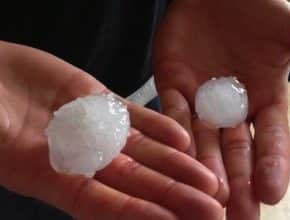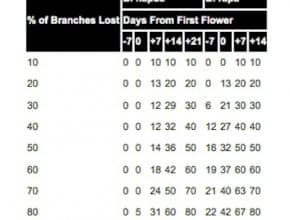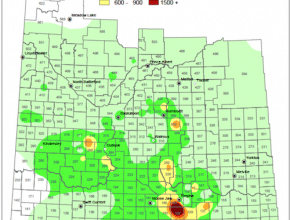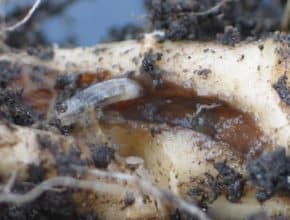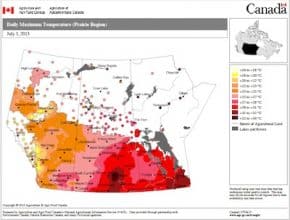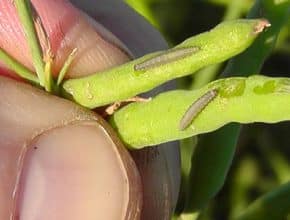Hail struck a number of areas over the past week, and canola damage ranged from light to total destruction. The photo above shows a couple hailstones collected around Lethbridge this week. Canola has a remarkable capacity to recover from light hail at early flowering — although if the flowering period is extended as a result, the crop may benefit from…
Canola Watch Posts
-
-
10. Crops are in the 20-50% flowering window, yield potential is OK, there’s moisture in the canopy and you have sclerotinia spraying to do. 9. Cabbage seedpod weevils have moved into your area for the first time, and you have to do sweep netting to see if thresholds are at 2 per sweep. 8. Hail rolled through and you have…
-
Canola is quite resilient to light hail at up to 20% flower. The crop can flower longer to compensate, and may recover with only minimal to moderate yield loss. Canola has also shown remarkable recovery from more intense hail at 20% flower. However, a crop flattened by hail is unlikely to recover. If regrowth occurs, which is possible, plants are…
-
Bertha armyworm adult trap counts suggest low to medium risk in most areas this year, with a couple higher risk hot spots in Saskatchewan — south of Regina being the largest. (See the map above.) Any need to spray is at least two weeks away. Larvae do the damage, and spraying should only occur if larvae feeding reaches threshold levels…
-
Root maggots and root disease often show up together in the same field. Root maggots are white and up to 10 mm (half an inch) long — just like maggots. Maggot feeding can damage root crowns and impede water movement, causing wilting. Severe feeding can cause plant death. Severe root maggot damage can occur in fields with back to back…
-
Because Serenade works differently from other fungicides, we want to share these instructions for best results, as provided by Bayer CropScience:…
-
It’s looking like a hot week across the Prairies. The map above shows the highs for July 3, with many regions with highs of 30C+. (Click on the map for a bigger version.) Canola doesn’t like heat, especially at flowering. Heat can cause bud and flower blasting, resulting in blank pods and lower yield. But heat isn’t the only possible…
-
-
Moisture has a much larger influence than temperature when it comes to sclerotinia risk. Infection can be high in hot weather as long as the moisture is there. Moisture can come from rain, relative humidity in the high 80s, or morning dew. Dew and high humidity can provide enough moisture for sclerotinia stem rot. If your pants get wet walking…

